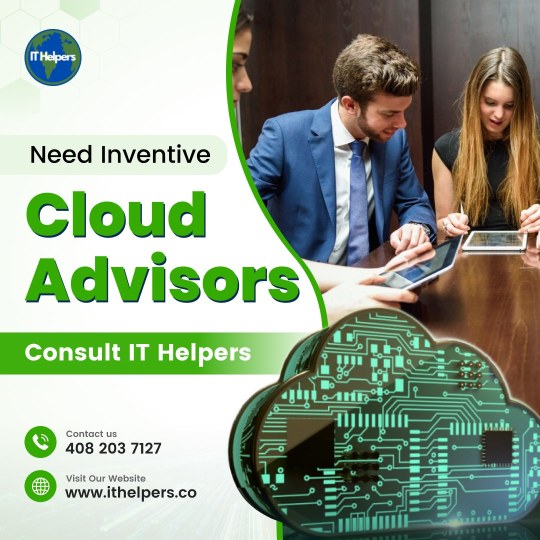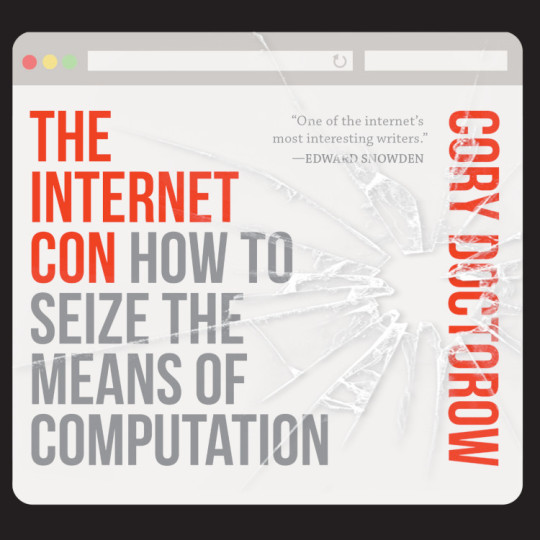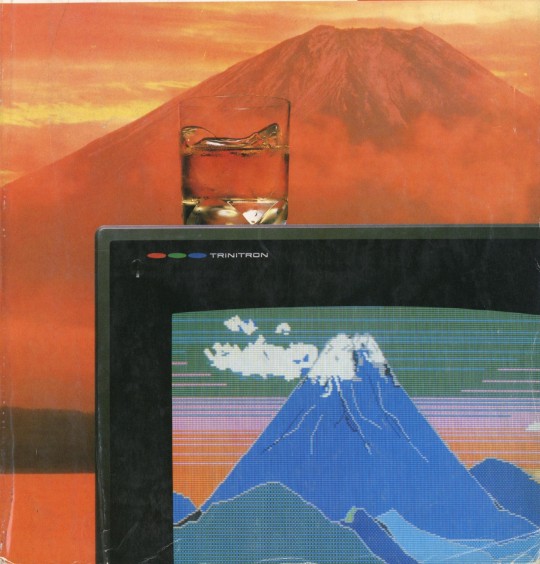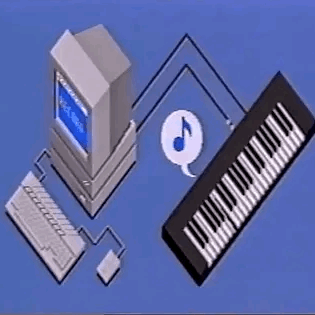#cloud computing technology
Explore tagged Tumblr posts
Text
Top 10 cloud computing technologies to look out for in 2025
Cloud computing technology is a fast-paced industry with emerging trends, improved innovations, and adopting technologies to the competitive landscape. You must look for and adapt emerging trends to gain a competitive advantage in the hypercompetitive market. Infosprint Technologies has delved deep into cloud trends and cloud computing services to identify technologies that will reshape business operations and beyond. In this blog, we'll explore the top cloud computing technologies to watch in 2025, delving into their potential impacts and how they could transform the tech landscape.
“There are no winners or losers in every competition, only learners. - Brian Herbert”
Hyperconnected Cloud Ecosystems: The Future of Business
Hyperconnected cloud ecosystems promise to revolutionize how businesses operate by seamlessly integrating various cloud services and applications. Simply put, it's a world in which everything is interconnected and has the potential to innovate, become more efficient, and open up new possibilities.
Transformative capabilities
Enhanced Efficiency: Streamlined workflows and automated processes leading to increased productivity.
Data-Driven Insights: Real-time access to data from multiple sources for informed decision-making.
Scalability and Flexibility: Ability to adapt to changing business needs rapidly.
Innovation Boost: A fertile ground for developing new products and services.
Why We Must Look Out for 2025:
2025 is a critical juncture for the maturation of hyperconnected cloud ecosystems. We can anticipate:
Widespread Adoption: Increased number of businesses leveraging these ecosystems.
Standardized Frameworks: Emergence of common standards for interoperability.
Security Challenges: New threats and vulnerabilities to address.
Competitive Advantage: Early adopters gain a significant edge over competitors.
Understanding and preparing for these developments is essential for businesses to thrive in the digital age.
2. Quantum Computing as a Service (QCaaS)
Quantum computing services an advanced theory incorporating quantum mechanics to process information in ways classical computers cannot, solving complex problems exponentially faster. A proven cloud computing theory that will be visualized by 2025. This technology could lead to breakthroughs in areas previously deemed impossible, driving economic growth and societal advancements.
Economical Impacts of QCaaS by 2025
Economic transformation: Emerging quantum-based new industries with new job opportunities
Economic growth: Increased innovations and complex solving problems pushing economic growth.
Competitive advantage: Early adopters will be leading the market from their competitors.
Why We Must Be Lookout for 2025:
While still in its nascent stages, QCaaS is rapidly evolving. Experts predict that by 2025, we could witness significant strides in quantum error correction and algorithm development. This progress will bring QCaaS closer to commercial viability, making it essential for businesses and researchers to stay informed about its potential applications and implications.
Early adoption of QCaaS can provide a competitive edge, allowing organizations to harness the power of quantum computing without the significant upfront investment required for building in-house quantum infrastructure.
3. Blockchain: The Foundation for Trust and Transparency
By 2025, blockchain and cloud computing technology, renowned for its decentralized and immutable ledger capabilities, will be increasingly integrated. As a result of this merger, there will be more chances for efficiency, openness, and data security.
Blockchain and Cloud: A Transformative Partnership:
Transparency and trust: Transparent transactions and record-keeping builds trust with stakeholders.
Cost reduction: Streamlined processes and reduced intermediaries lead to cost savings.
New business models: Integrating blockchain with the cloud creates new business models and new revenue generation opportunities for innovative businesses.
Why We Must Be on the Lookout in 2025
Improved Data Integrity: Applications needing transparency and security depend on data integrity and traceability, which blockchain integration can guarantee.
Decentralized Applications: The creation of decentralized applications (dApps), which go beyond cryptocurrency use cases, will be made possible by cloud-based blockchain platforms.
Smart Contracts: By automating and streamlining complicated business procedures, smart contracts on cloud platforms will eliminate the need for middlemen.
4. Harnessing the Power of AI and ML
The convergence of artificial intelligence (AI) and machine learning (ML) is set to transform industries by enabling enhanced decision-making through advanced data analysis, cloud-automating routine tasks to free up human resources for more strategic activities, and significantly improving customer experiences with AI-driven chatbots and personalized recommendations. Moreover, this integration is expected to foster innovative business models and new revenue streams, driving unprecedented innovation and operational efficiency across various sectors.
The Catalyst for a New Era of Business:
Increased efficiency: Quick decision-making process with the help of AI and ML data analysis.
Economic growth: The development of AI and ML fosters economic growth with increasing opportunities in new markets.
Job displacement and creation: Automation of routine tasks will create job displacement in some sectors and new jobs in AI collaboration and data science.
Why We Must Be on the Lookout in 2025
The pace of development in AI and ML is accelerating rapidly. By 2025, we expect widespread adoption of these technologies, leading to significant disruptions in various sectors. Organizations must adapt to this evolving landscape to stay caught up to their competitors.
To stay ahead of the curve, businesses must invest in AI and ML research, develop talent, and explore potential industry applications.
5. Benefits of Adopting Cloud-Native Technologies
Cloud-native technologies, like containerization, microservices, and DevOps, are methods and tools created to take full advantage of cloud solutions. These technologies will keep developing by 2025, encouraging more agile software development.
Possible Effects:
Faster Development Cycles: By using cloud-native techniques, development and deployment cycles will be sped up, allowing for the quicker release of updates and new features.
Better Scalability: Microservices and containerization will improve scalability, enabling applications to manage growing loads effectively.
Enhanced Resilience: Cloud-native architectures will increase an application's reliability by providing a stronger defense against errors.
Why We Must Be on the Lookout in 2025
Microservices and containerization are two examples of quickly developing cloud-native technologies that promise faster application development, better scalability, and increased robustness. Businesses must implement these technologies to create better customer experiences, maximize resources, accelerate innovation, reduce risks, and take advantage of new opportunities to remain competitive in 2025.
6. Building a Sustainable Digital Future: Green cloud computing
As we enter a sustainable era where conservative measures are encouraged, computer carbon emissions are at a peak. Top companies like Google and Microsoft are adapting to a sustainable future. Green cloud computing helps manufacture computers, chips, and other smart peripherals that don't harm the planet. with an emphasis on reducing the environmental impact of data centers and cloud services.
The Rise of Green Cloud Computing
Energy Efficiency: Cloud providers will invest in energy-efficient technologies and renewable energy sources to minimize their carbon footprint.
Sustainable Practices: Businesses will adopt green cloud computing practices, such as optimizing resource usage and implementing eco-friendly data center designs.
Regulatory Compliance: As environmental regulations become stricter, cloud providers must ensure compliance with sustainability standards and certifications.
Why We Must Be on the Lookout in 2025
Regulatory pressure: As the environmental pressure increases on the businesses they will need a sustainable method to comply with the regulations.
Consumer demand: Consumers are self-conscious about green initiatives. Companies using environment-friendly solutions will gain the customer's favor.
Innovation: Innovation opportunities will rise due to the increasing pressure of creating renewable energy, energy-efficient hardware, and software optimization.
7. Fortifying the Cloud: Robust Security Solutions
Cyberattacks are ever more complex, and the threat landscape is always changing. Cloud-based attacks that target financial institutions, government organizations, and key infrastructure should increase by 2025. Organizations must invest in state-of-the-art security solutions and take a proactive risk management approach to guard against these risks.
Cloud Security Challenges
Enhanced Data Protection: Advanced security solutions will safeguard sensitive data from breaches, ransomware attacks, and data loss.
Improved Business Continuity: Robust cloud security measures will minimize downtime and financial losses due to cyber incidents.
Increased Customer Trust: Commitment to cloud security will build customer confidence and loyalty.
Compliance Adherence: Innovative security solutions will help organizations meet regulatory requirements and avoid hefty penalties.
Why We Must Be on the Lookout in 2025
Complex cyber attacks: The sophisticated and frequent attacks on critical infrastructures, financial institutions, and government agencies are expected to escalate.
Data Privacy Regulations: Adherence to stringent data privacy regulations will demand robust security measures to protect sensitive information.
Business continuity: To safeguard against frequent cyber attacks robust cloud security solutions are needed.
Customer trust: Building strong customer trust with secure data and privacy protection.
8. The Dynamic Duo: Blockchain and Cloud
Blockchain is a distributed, decentralized database that enables safe information exchange between several parties. Integrating with cloud technology blockchain can build a decentralized network of nodes in cloud computing that exchange data and processing power. This enables businesses to get by without a single, centralized supplier. Alternatively, they can depend on a dispersed computer network not controlled by a single company.
Potential Impacts:
Improved Data Integrity: Applications needing transparency and security depend on data integrity and traceability, which blockchain integration can guarantee.
Decentralized Applications: The creation of decentralized applications (dApps), which go beyond cryptocurrency use cases, will be made possible by cloud-based blockchain platforms.
Why We Must Be on the Lookout in 2025
Matured blockchain platforms: This cloud-based blockchain makes it a more robust, user-friendly solution making it easier for the companies to adapt to the technology.
New business model: With the integration of blockchain and cloud a new strategic business model revolves around decentralization, trust, and transparency.
Regulatory clarity: Blockchain integrated with cloud computing will permanently change the government sector by providing clear regulation on cryptocurrency and a more stable environment for business operations.
Security enhancement: This technology will enhance the overall security posture of systems relying on these technologies.
9. Mastering Hybrid and Multi-Cloud Environments
Master Hybrid and multi-cloud environments to effectively manage the mix of public, private, and on-premise cloud. This requires understanding cloud differences, developing a strategic approach, overcoming challenges, and leveraging benefits to maximize business value and mitigate risks.
Potential Impacts:
Enhanced Flexibility and Scalability: Organizations can optimize resource utilization, scale applications seamlessly, and adapt to changing business needs.
Improved Disaster Recovery: Enhancing resilience and minimizing downtime by sharing workloads across multiple cloud platforms.
Optimized Cost Management: Leveraging the best pricing models from different cloud providers can lead to significant cost savings.
Increased Innovation: Access to a wider range of services and technologies can foster experimentation and accelerate time-to-market.
Why We Must Be on the Lookout in 2025
The hybrid and multi-cloud computing landscape changes quickly as new services and technologies are added regularly. Cloud complexity is predicted to rise significantly by 2025, necessitating the development of complicated management and governance plans by enterprises.
Businesses must invest in trained workers, use automation tools, and safeguard their cloud environments with strong security measures to remain competitive. Success also depends on creating successful migration plans and comprehending the subtleties of various cloud platforms.
10. Edge Computing: The Future of Real-Time Applications
By processing data closer to its source, edge computing avoids depending entirely on centralized data centers. By 2025, cloud services and edge computing integration will be more commonplace, resolving latency and bandwidth problems related to cloud processing.
Possible Effects:
Real-Time Data Processing: Edge computing will help with real-time data processing for applications like industrial IoT, smart cities, and autonomous cars that need quick answers.
Enhanced Efficiency: Cloud providers can lessen the stress on central servers by shifting processing to edge devices, which results in more economical and efficient use of resources.
Enhanced Security and Privacy: Processing data locally can guarantee adherence to data sovereignty laws and lower the chance of data breaches.
Why We Must Be on the Lookout in 2025
Edge computing can change how data is handled and examined completely. We anticipate a massive increase in IoT devices by 2025, producing enormous amounts of data, and making edge computing an essential technology. Improved application performance, lower latency, and quicker response times will result from its capacity to process data closer to the source. Edge computing will majorly advance efficiency and innovation in healthcare, manufacturing, and driverless cars. The potential of edge computing will increase with the expansion of 5G networks, opening up new avenues for individuals and enterprises.
A Roadmap to Success in 2025 and Beyond
The cloud computing landscape is expected to be dynamic and revolutionary by 2025. These technologies will spur innovation, efficiency, and new business prospects for companies in various industries. Examples of these technologies include edge computing, quantum computing, AI integration, and green cloud projects. In an ever-changing digital landscape, firms looking to capitalize on these developments and preserve a competitive advantage must be knowledgeable and flexible. Adopting these trends will help firms succeed in the future of cloud computing while also improving operational skills. A cloud computing service firm can help if you're having problems adapting and need a plan to alter your organization digitally.
1 note
·
View note
Text
How Secure Are Cloud Computing Services?
Discover how secure the cloud really is! Learn about top risks, security measures, and how to choose trusted Cloud computing service providers in India to keep your business protected in the digital era.

0 notes
Text
Unlocking the Power of Cloud Computing: A 2025 Guide for Businesses
With scalable and affordable solutions available to businesses of all sizes, cloud computing has completely transformed corporate operations. The need for more flexible and agile infrastructures is driving the growing adoption of cloud technology across all business sizes, from startups to global conglomerates. Cloud computing is still developing in 2024, with new features like better data protection, simpler collaboration, and seamless remote work capabilities. As businesses turn to digital transformation, cloud services play a critical role in guaranteeing competitiveness and growth. Organizations may improve resource allocation and decision-making by realizing the full potential of cloud computing.

Cost Efficiency and Scalability
Cloud computing offers significant cost-saving opportunities for businesses. Traditionally, companies had to invest heavily in physical servers, data centers, and IT staff to manage on-premises infrastructures. However, with the cloud, these upfront investments are no longer necessary. Companies only pay for the cloud services and resources they use, which makes it easier to scale up or down based on their current needs. This scalability ensures that businesses can adapt to market demands quickly, without incurring additional infrastructure costs.
Furthermore, cloud providers like AWS, Microsoft Azure, and Google Cloud offer flexible payment models, such as pay-as-you-go and subscription-based services, which can greatly reduce operating expenses. These benefits make cloud computing an attractive option for businesses seeking to optimize their budgets.
Enhanced Data Security and Compliance
In the digital age, data security has become one of the most critical challenges for businesses. Breaches and cyber-attacks are increasing in frequency, making robust security measures more essential than ever. Cloud computing providers are well aware of these risks and have built comprehensive security protocols into their services. With features like end-to-end encryption, multi-factor authentication, and regular security updates, cloud providers help businesses safeguard their sensitive data.
Moreover, most cloud service providers comply with international security standards and industry regulations, such as GDPR, HIPAA, and ISO certifications. This ensures that businesses operating in highly regulated industries can confidently use cloud services while remaining compliant with data protection laws.
Flexibility and Remote Work Enablement
The shift to remote work has underscored the importance of cloud computing for modern businesses. The cloud enables employees to access crucial tools, data, and applications from any location, using any device with an internet connection. This flexibility promotes greater collaboration and productivity, as teams can work together in real time, even when geographically dispersed.
Cloud-based tools such as Microsoft 365, Slack, and Google Workspace have transformed how employees collaborate, allowing them to share documents, host virtual meetings, and manage projects seamlessly. The result is a more efficient, interconnected workforce that can respond quickly to business needs.
Businesses of all sizes should think about implementing cloud computing as cloud technologies develop further if they want to remain competitive in an increasingly digital world. Cloud solutions provide businesses with the flexibility, scalability, and security needed to improve operational efficiency and quickly adjust to changes in the market. The cloud is the solution for any size business, be it a startup seeking low-cost options or a larger organization in need of a flexible infrastructure. Enrolling in a course or internship in cloud computing, whether for professionals or students, can lead to a bright future in this quickly expanding industry.
#Cloud Computing#Cloud Computing Course#Cloud Computing Internship#Cloud Computing technology#Cgit#Cloud Computing in Pune
0 notes
Text

#Cloud Computing Advisors#Cloud Computing Services#Cloud Computing Technology#Security in Cloud Computing
0 notes
Text

#Computer#Ocean#Water#Surreal#Digital art#Keyboard#Mouse#Glass#Reflection#Sky#Clouds#Monitor#Sea#Fantasy#Futuristic#Technology#Nature#Creative#Imaginative#Desktop#Drink
357 notes
·
View notes
Text

BSOD v2 Sunset Clouds
#cyberpunk#bsod#netart#vaporwave#technology#computing#retro#nostalgia#windows xp#windowsxp#pop art#ai generated photo#openai#v a p o r w a v e#digital art#a e s t h e t i c#sunset#clouds#photoshop#warakami
416 notes
·
View notes
Text
Cloudburst

Enshittification isn’t inevitable: under different conditions and constraints, the old, good internet could have given way to a new, good internet. Enshittification is the result of specific policy choices: encouraging monopolies; enabling high-speed, digital shell games; and blocking interoperability.
First we allowed companies to buy up their competitors. Google is the shining example here: having made one good product (search), they then fielded an essentially unbroken string of in-house flops, but it didn’t matter, because they were able to buy their way to glory: video, mobile, ad-tech, server management, docs, navigation…They’re not Willy Wonka’s idea factory, they’re Rich Uncle Pennybags, making up for their lack of invention by buying out everyone else:
https://locusmag.com/2022/03/cory-doctorow-vertically-challenged/
But this acquisition-fueled growth isn’t unique to tech. Every administration since Reagan (but not Biden! more on this later) has chipped away at antitrust enforcement, so that every sector has undergone an orgy of mergers, from athletic shoes to sea freight, eyeglasses to pro wrestling:
https://www.whitehouse.gov/cea/written-materials/2021/07/09/the-importance-of-competition-for-the-american-economy/
But tech is different, because digital is flexible in a way that analog can never be. Tech companies can “twiddle” the back-ends of their clouds to change the rules of the business from moment to moment, in a high-speed shell-game that can make it impossible to know what kind of deal you’re getting:
https://pluralistic.net/2023/02/27/knob-jockeys/#bros-be-twiddlin
To make things worse, users are banned from twiddling. The thicket of rules we call IP ensure that twiddling is only done against users, never for them. Reverse-engineering, scraping, bots — these can all be blocked with legal threats and suits and even criminal sanctions, even if they’re being done for legitimate purposes:
https://locusmag.com/2020/09/cory-doctorow-ip/
Enhittification isn’t inevitable but if we let companies buy all their competitors, if we let them twiddle us with every hour that God sends, if we make it illegal to twiddle back in self-defense, we will get twiddled to death. When a company can operate without the discipline of competition, nor of privacy law, nor of labor law, nor of fair trading law, with the US government standing by to punish any rival who alters the logic of their service, then enshittification is the utterly foreseeable outcome.
To understand how our technology gets distorted by these policy choices, consider “The Cloud.” Once, “the cloud” was just a white-board glyph, a way to show that some part of a software’s logic would touch some commodified, fungible, interchangeable appendage of the internet. Today, “The Cloud” is a flashing warning sign, the harbinger of enshittification.
When your image-editing tools live on your computer, your files are yours. But once Adobe moves your software to The Cloud, your critical, labor-intensive, unrecreatable images are purely contingent. At at time, without notice, Adobe can twiddle the back end and literally steal the colors out of your own files:
https://pluralistic.net/2022/10/28/fade-to-black/#trust-the-process
The finance sector loves The Cloud. Add “The Cloud” to a product and profits (money you get for selling something) can turn into rents (money you get for owning something). Profits can be eroded by competition, but rents are evergreen:
https://pluralistic.net/2023/07/24/rent-to-pwn/#kitt-is-a-demon
No wonder The Cloud has seeped into every corner of our lives. Remember your first iPod? Adding music to it was trivial: double click any music file to import it into iTunes, then plug in your iPod and presto, synched! Today, even sophisticated technology users struggle to “side load” files onto their mobile devices. Instead, the mobile duopoly — Apple and Google, who bought their way to mobile glory and have converged on the same rent-seeking business practices, down to the percentages they charge — want you to get your files from The Cloud, via their apps. This isn’t for technological reasons, it’s a business imperative: 30% of every transaction that involves an app gets creamed off by either Apple or Google in pure rents:
https://www.kickstarter.com/projects/doctorow/red-team-blues-another-audiobook-that-amazon-wont-sell/posts/3788112
And yet, The Cloud is undeniably useful. Having your files synch across multiple devices, including your collaborators’ devices, with built-in tools for resolving conflicting changes, is amazing. Indeed, this feat is the holy grail of networked tools, because it’s how programmers write all the software we use, including software in The Cloud.
If you want to know how good a tool can be, just look at the tools that toolsmiths use. With “source control” — the software programmers use to collaboratively write software — we get a very different vision of how The Cloud could operate. Indeed, modern source control doesn’t use The Cloud at all. Programmers’ workflow doesn’t break if they can’t access the internet, and if the company that provides their source control servers goes away, it’s simplicity itself to move onto another server provider.
This isn’t The Cloud, it’s just “the cloud” — that whiteboard glyph from the days of the old, good internet — freely interchangeable, eminently fungible, disposable and replaceable. For a tool like git, Github is just one possible synchronization point among many, all of which have a workflow whereby programmers’ computers automatically make local copies of all relevant data and periodically lob it back up to one or more servers, resolving conflicting edits through a process that is also largely automated.
There’s a name for this model: it’s called “Local First” computing, which is computing that starts from the presumption that the user and their device is the most important element of the system. Networked servers are dumb pipes and dumb storage, a nice-to-have that fails gracefully when it’s not available.
The data structures of source-code are among the most complicated formats we have; if we can do this for code, we can do it for spreadsheets, word-processing files, slide-decks, even edit-decision-lists for video and audio projects. If local-first computing can work for programmers writing code, it can work for the programs those programmers write.
Local-first computing is experiencing a renaissance. Writing for Wired, Gregory Barber traces the history of the movement, starting with the French computer scientist Marc Shapiro, who helped develop the theory of “Conflict-Free Replicated Data” — a way to synchronize data after multiple people edit it — two decades ago:
https://www.wired.com/story/the-cloud-is-a-prison-can-the-local-first-software-movement-set-us-free/
Shapiro and his co-author Nuno Preguiça envisioned CFRD as the building block of a new generation of P2P collaboration tools that weren’t exactly serverless, but which also didn’t rely on servers as the lynchpin of their operation. They published a technical paper that, while exiting, was largely drowned out by the release of GoogleDocs (based on technology built by a company that Google bought, not something Google made in-house).
Shapiro and Preguiça’s work got fresh interest with the 2019 publication of “Local-First Software: You Own Your Data, in spite of the Cloud,” a viral whitepaper-cum-manifesto from a quartet of computer scientists associated with Cambridge University and Ink and Switch, a self-described “industrial research lab”:
https://www.inkandswitch.com/local-first/static/local-first.pdf
The paper describes how its authors — Martin Kleppmann, Adam Wiggins, Peter van Hardenberg and Mark McGranaghan — prototyped and tested a bunch of simple local-first collaboration tools built on CFRD algorithms, with the goal of “network optional…seamless collaboration.” The results are impressive, if nascent. Conflicting edits were simpler to resolve than the authors anticipated, and users found URLs to be a good, intuitive way of sharing documents. The biggest hurdles are relatively minor, like managing large amounts of change-data associated with shared files.
Just as importantly, the paper makes the case for why you’d want to switch to local-first computing. The Cloud is not reliable. Companies like Evernote don’t last forever — they can disappear in an eyeblink, and take your data with them:
https://www.theverge.com/2023/7/9/23789012/evernote-layoff-us-staff-bending-spoons-note-taking-app
Google isn’t likely to disappear any time soon, but Google is a graduate of the Darth Vader MBA program (“I have altered the deal, pray I don’t alter it any further”) and notorious for shuttering its products, even beloved ones like Google Reader:
https://www.theverge.com/23778253/google-reader-death-2013-rss-social
And while the authors don’t mention it, Google is also prone to simply kicking people off all its services, costing them their phone numbers, email addresses, photos, document archives and more:
https://pluralistic.net/2022/08/22/allopathic-risk/#snitches-get-stitches
There is enormous enthusiasm among developers for local-first application design, which is only natural. After all, companies that use The Cloud go to great lengths to make it just “the cloud,” using containerization to simplify hopping from one cloud provider to another in a bid to stave off lock-in from their cloud providers and the enshittification that inevitably follows.
The nimbleness of containerization acts as a disciplining force on cloud providers when they deal with their business customers: disciplined by the threat of losing money, cloud companies are incentivized to treat those customers better. The companies we deal with as end-users know exactly how bad it gets when a tech company can impose high switching costs on you and then turn the screws until things are almost-but-not-quite so bad that you bolt for the doors. They devote fantastic effort to making sure that never happens to them — and that they can always do that to you.
Interoperability — the ability to leave one service for another — is technology’s secret weapon, the thing that ensures that users can turn The Cloud into “the cloud,” a humble whiteboard glyph that you can erase and redraw whenever it suits you. It’s the greatest hedge we have against enshittification, so small wonder that Big Tech has spent decades using interop to clobber their competitors, and lobbying to make it illegal to use interop against them:
https://locusmag.com/2019/01/cory-doctorow-disruption-for-thee-but-not-for-me/
Getting interop back is a hard slog, but it’s also our best shot at creating a new, good internet that lives up the promise of the old, good internet. In my next book, The Internet Con: How to Seize the Means of Computation (Verso Books, Sept 5), I set out a program fro disenshittifying the internet:
https://www.versobooks.com/products/3035-the-internet-con
The book is up for pre-order on Kickstarter now, along with an independent, DRM-free audiobooks (DRM-free media is the content-layer equivalent of containerized services — you can move them into or out of any app you want):
http://seizethemeansofcomputation.org
Meanwhile, Lina Khan, the FTC and the DoJ Antitrust Division are taking steps to halt the economic side of enshittification, publishing new merger guidelines that will ban the kind of anticompetitive merger that let Big Tech buy its way to glory:
https://www.theatlantic.com/ideas/archive/2023/07/biden-administration-corporate-merger-antitrust-guidelines/674779/
The internet doesn’t have to be enshittified, and it’s not too late to disenshittify it. Indeed — the same forces that enshittified the internet — monopoly mergers, a privacy and labor free-for-all, prohibitions on user-side twiddling — have enshittified everything from cars to powered wheelchairs. Not only should we fight enshittification — we must.

Back my anti-enshittification Kickstarter here!

If you’d like an essay-formatted version of this post to read or share, here’s a link to it on pluralistic.net, my surveillance-free, ad- free, tracker-free blog:
https://pluralistic.net/2023/08/03/there-is-no-cloud/#only-other-peoples-computers

Image: Drahtlos (modified) https://commons.wikimedia.org/wiki/File:Motherboard_Intel_386.jpg
CC BY-SA 4.0 https://creativecommons.org/licenses/by-sa/4.0/deed.en
—
cdsessums (modified) https://commons.wikimedia.org/wiki/File:Monsoon_Season_Flagstaff_AZ_clouds_storm.jpg
CC BY-SA 2.0 https://creativecommons.org/licenses/by-sa/2.0/deed.en
#pluralistic#web3#darth vader mba#conflict-free replicated data#CRDT#computer science#saas#Mark McGranaghan#Adam Wiggins#evernote#git#local-first computing#the cloud#cloud computing#enshittification#technological self-determination#Martin Kleppmann#Peter van Hardenberg
890 notes
·
View notes
Text

Harness the power of cloud computing services to drive innovation. Our expert team provides seamless cloud migration, consulting, and infrastructure management to drive growth.
#cloud computing service provider#cloud computing technology#cloud computing security#cloud computing consulting in india#Best Cloud Technologies in India#cloud solutions in india
0 notes
Text

Rendering Ranges
#art#nostalgia#1980s#vaporwave#aesthetic#vintage#magazine#neon colors#1990s#neon#retro computing#computers#computer#mountains#landscape#technology#sunset#sunrise#clouds#photography#japanese#japan
228 notes
·
View notes
Note
Hi there!! I love your stimboards so much, they're so nicely put together. I was wondering if you could create one focused on spamton and noelle's friendship (from deltarune) with blue colors, old tech, and wintertime themes? Feel free to go wherever inspiration takes you though :^]
Of course I can, here you go ^^ And thank you!!









🖥️🌀❄️ Platonic Spamton G. Spamton & Noelle Holiday (Deltarune) stimboard with themes of blue, old tech, and winter for @charrfie :3
Thank you for the request, I tried my best ^^ I tried a little bit of a different layout/organisation and I'm not sure if I like it? Whatever. I think this looks alright at least, and I hope you like it :3
I like them ^^ I'm actually a Deltarune fan, but sadly I don't know much about chapter 2 since I haven't gotten around to finishing it...I still like these two though, both separately and in this kind of dynamic :33
Sources:
x | x | x
x | x | x
x | x | x
#stimblr#stimboard#visual stim#spamton g spamton#noelle holiday#deltarune#utdr#winter stim#snow stim#ice stim#snowflake stim#old tech stim#computer stim#technology stim#cloud stim#nature stim#sky stim#blue stim#white stim#i feel like this is kinda bad#ngl
23 notes
·
View notes
Text

BioTech Industries Borg Construct Aj^6
Source: The Essential Guide to Weapons and Technology (Del Rey, 1997)
#star wars#cybernetics#cyborgs#lobot#cloud city#biotech industries#borg construct aj^6#aj^6#computers#first appearance the empire strikes back#galactic civil war#essential guide to weapons and technology#essential guides
12 notes
·
View notes
Text









Board with sun + tech and soft green / soft pink stims!
- Mod Pent.
((Sources of gifs: x, x, x | x, x, x | x, x, x )
#Stim#Stimmy#Sensory#Stimblr#Ours#Nature#Trees#Suns#Sunlight#Flowers#Blossoming#Clouds#Technology#Computers#TVs#Pianos#Instruments#Playing#Phones#Yellow#Pink#Green#Stimboard#Gif
53 notes
·
View notes
Text
#microsoft#israel hamas war#refugees#palestinian refugees#gaza#occupied palestine#microsoft ai and cloud computing services#israel#technology
4 notes
·
View notes
Text









Stimboard of the Blue Man Group since I saw them last night (THEY WERE AWESOME)
🚹 🖌️ 🚹
🖌️ 🚹 🖌️
🚹 🖌️ 🚹

#stim#stimboard#blue#white#black#paint#jellyfish#ocean#retro#tech#computer#webcore#planet#space#slime#snow slime#cloud slime#painting#technology#blue man group#not request#fav
56 notes
·
View notes
Text
Empower Your Digital Presence with Cutting-Edge Frameworks
In today’s fast-evolving digital landscape, staying ahead requires more than just a functional website or application—it demands innovation and efficiency. At Atcuality, we specialize in Website and Application Framework Upgrade solutions tailored to your business goals. Whether you're looking to optimize performance, enhance user experience, or integrate the latest technologies, our team ensures seamless upgrades that align with industry standards. Transitioning to advanced frameworks not only improves loading speeds and scalability but also strengthens your cybersecurity measures. With Atcuality, you gain access to bespoke services that future-proof your digital assets. Let us elevate your online platforms to a new realm of excellence.
#ai applications#artificial intelligence#ai services#website development#website developer near me#website developers#website developer in india#web development#web design#application development#app development#app developers#digital marketing#seo services#seo#emailmarketing#search engine marketing#search engine optimization#digital consulting#virtual reality#vr games#vr development#augmented reality#augmented and virtual reality market#cash collection application#task management#blockchain#metaverse#cloud computing#information technology
8 notes
·
View notes
Text









Cloud stimboard
x x x
x (my art) x
x x x
#oc#tw hands#stimboard#stim#stimboards#stimmy#tech#green#cloud#weather#ice cream#food#rock#wood#nature#technology#computer#gaming
8 notes
·
View notes